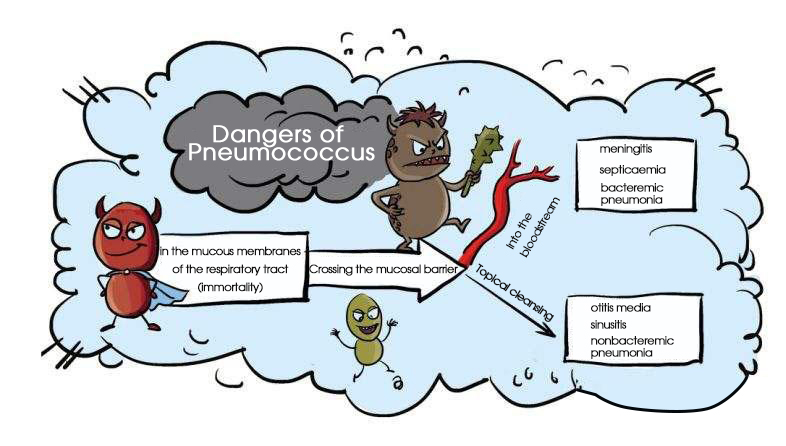What harm does pneumonia have
Pneumonia is more dangerous for children, the elderly and the weak. Streptococcus pneumoniae is the most common bacterial infection in adult pneumonia. Other pathogens include anaerobes, Staphylococcus aureus, Haemophilus influenzae, Chlamydia pneumoniae, Chlamydia psittaci, Chlamydia trachomatis and other gram-negative bacilli.

Toxemia, hypoxia and cell metabolism disorders can also lead to drowsiness, coma, convulsion, intestinal paralysis, acute heart failure, shock and jaundice.
In addition to these nonspecific complications, the further expansion of infection can also cause a variety of specific complications, such as infection can spread to the pleural cavity, causing empyema, and blood dissemination can also lead to pleurisy, endocarditis, pericarditis, arthritis and so on.
Pneumonia can also cause lung tissue necrosis and lead to lung abscess, which is common in Staphylococcus and Klebsiella pneumoniae infection. During the treatment of interstitial pneumonia, if the symptoms of infection persist or worsen, or if there are symptoms of interstitial pneumonia that can not be explained by pneumonia, these possibilities should be considered.
Generally speaking, the incidence of these complications has been greatly reduced.
When bronchial obstruction occurs due to accumulation of viscous secretions, swelling of mucous membrane or spasm of bronchial smooth muscle, emphysema or atelectasis of distal lung tissue may occur in patients with interstitial pneumonia.
How does the symptom of pneumonia get pneumonia to do? The remedial method of pneumonia
Chronic incomplete obstruction can lead to bronchiectasis or lung abscess. Infants less than half a year old have small bronchi, which are most likely to be blocked. Acute bronchiolitis may occur in respiratory syncytial virus infection.
At this time, there are inflammation in bronchi, alveoli and interstitium. The clinical features are dry cough, paroxysmal dyspnea and emphysema.
When suffering from interstitial pneumonia, the extensibility of the lung tissue is reduced due to consolidation, chest pain also limits the expansion of the chest, and the surfactant in the lung will be reduced due to inflammation, resulting in the increase of the surface tension of the alveoli, which also causes difficulties in expansion.
All of these will make the patients with interstitial pneumonia expend more effort to expand the chest (lower compliance). But in general pneumonia, the increase of bronchial resistance is not much.
Therefore, patients can take shallow and fast breathing instead. This is a compensatory mechanism. When the condition improves, the respiratory rate will decrease rapidly.














